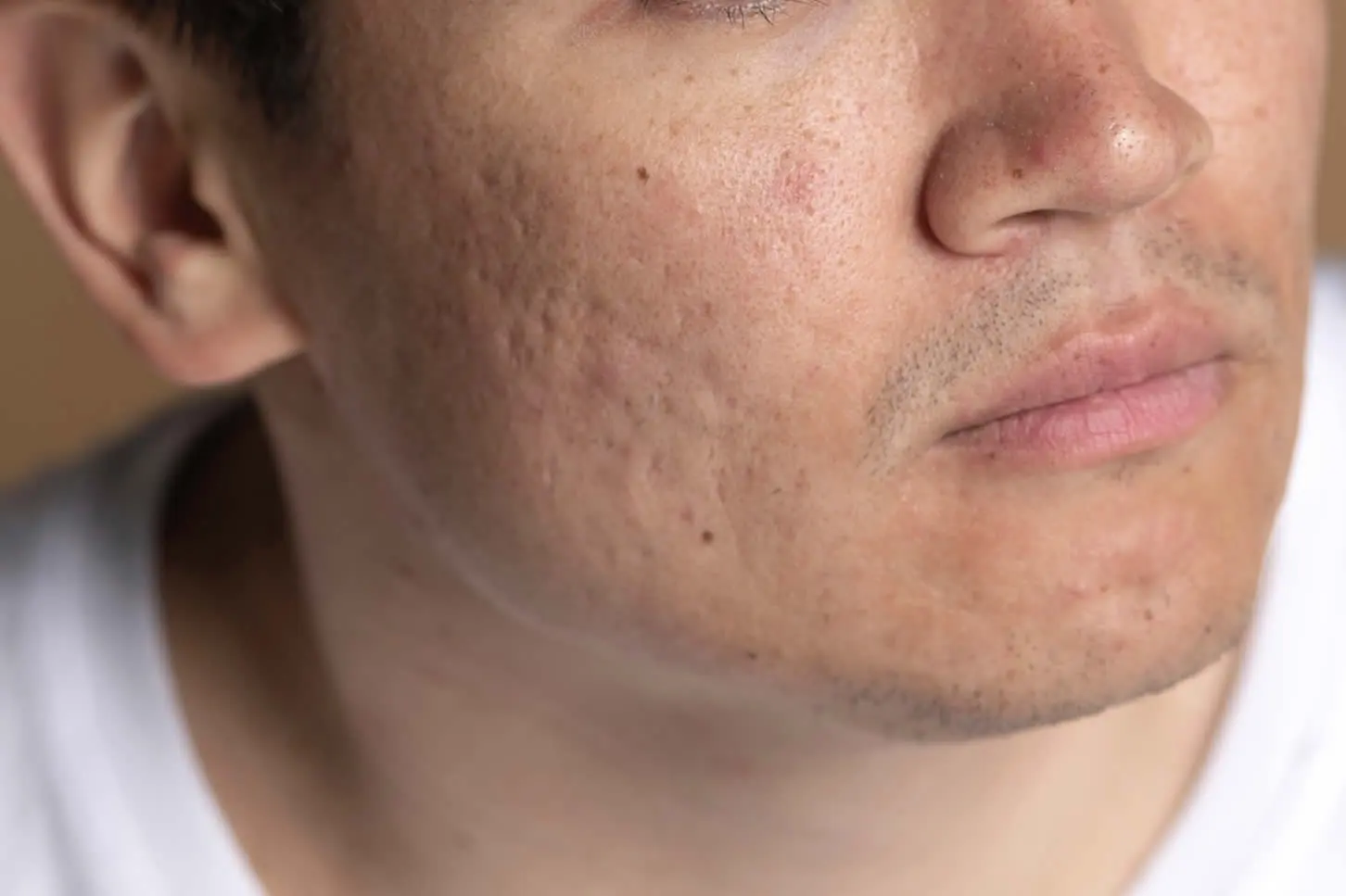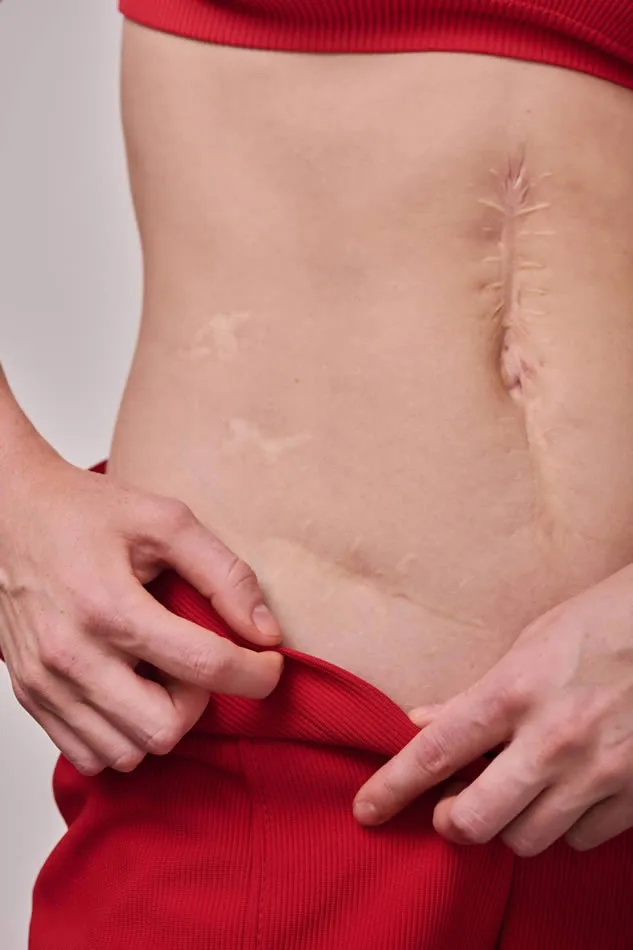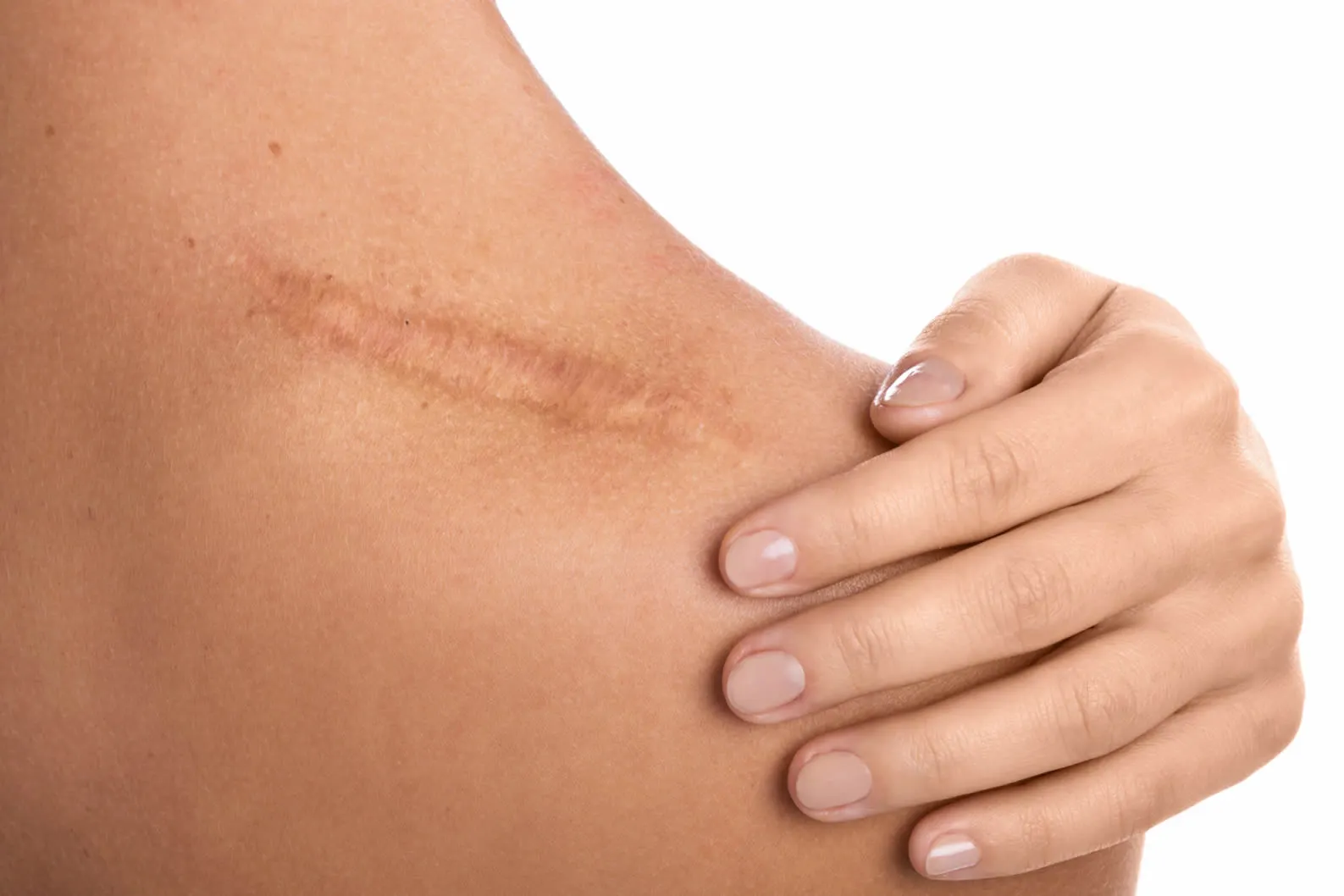What is Scar Reduction Treatment?
Scar reduction, also referred to as scar revision or scar correction, encompasses a range of treatments meticulously designed to diminish the appearance of scars. These therapeutic interventions may include the application of topical lotions and creams, utilizing light-based therapy, or surgical procedures.
The selection of the appropriate treatment is contingent upon various factors, including the nature of the scar, its anatomical location, and the individual’s specific preferences. The overarching goal of scar reduction is not merely aesthetic; it also restores a sense of normality and self-confidence to those affected by noticeable scarring.

What are the some of the different types of scars that can be treated?
Here is an elucidation of the types of scars that can be treated:
- Keloid Scars: Characterized by an aggressive healing response, these scars extend beyond the original wound, often becoming stiff and potentially restricting movement. Those with darker skin are more susceptible to keloid scars.
- Contracture Scars: These scars tighten significantly over time and may affect muscles, nerves, and deeper tissues, commonly resulting from burns.
- Hypertrophic Scars: Similar in appearance to keloid scars, hypertrophic scars remain within the bounds of the original wound, presenting as raised and possibly pigmented.
- Acne Scars: Manifesting as small, pigmented, indented, or textured marks, these scars remain after acne blemishes and necessitate specialized treatment.
- Surgical or Traumatic Scars: Varying in size and appearance, these scars arise from surgery or traumatic injuries.
The appropriate treatment and revision techniques are contingent upon the unique characteristics of the scar. A thorough consultation with a skilled dermatologist is essential to ascertain the best approach for those seeking to minimize the appearance of scars.
What are the treatments for Scar Reduction?
When it comes to scar reduction, treatments offer the potential to diminish the size and visibility of scars, although complete eradication remains elusive. While certain approaches are geared towards averting scar formation during the healing process, others specifically target scar mitigation.
The array of scar treatments encompasses:
- Dermabrasion: Widely employed for acne scars, dermabrasion employs a gentle “sanding” technique to eliminate the skin’s top layer. This procedure renders the skin smoother, refining the appearance of scars.
- Injections: Medication is directly injected into the scar by a healthcare professional, inducing a reduction in size and flattening. Corticosteroid injections can shrink keloid scars. In some cases, drugs such as bleomycin and fluorouracil may be injected to alleviate itching, and pain, and flatten scars.
- Laser Treatments: Diverse laser and light therapies can notably mitigate scars resulting from acne. These treatments employ specific light wavelengths to provoke targeted actions in the skin. For instance, the V-beam pulsed dye laser eradicates excessive blood vessels, reducing redness. Other lasers, like the Fraxel, remodel scar tissue by vaporizing segments, enhancing flexibility, and mitigating pain and itching.
- Pressure Therapy: Utilizing elastic bandages, dressings, or stockings to apply pressure during healing impedes scar development or minimizes its extent. Massage therapy can likewise foster scar tissue remodeling.
- Scar-Revision Surgery: Surgical interventions encompass scar excision, improvement of appearance, or even skin grafting from another area, replacing one scar with another of preferred characteristics.
- Topical Creams and Ointments: Silicone ointments can diminish or prevent scar formation. Corticosteroid creams and silicone gel sheets may also be recommended. Hydroquinone-infused skin-lightening creams could be suggested for individuals with darker skin.

Pre and post-treatment Care
Ensuring successful scar reduction involves meticulous pre and post-treatment care, setting the stage for optimal outcomes.
Here’s a breakdown of what you need to know:
Pre-Treatment Care:
- Consultation: Begin with a thorough consultation with a dermatologist specializing in scar treatment. Discuss your medical history, skin type, and expectations.
- Healthy Lifestyle: Maintain a balanced diet, exercise routine, and proper hydration. These factors contribute to overall skin health, facilitating the healing process.
- Avoid Sun Exposure: Shield your skin from excessive sun exposure, as UV rays can hinder healing and exacerbate scarring. Use sunscreen with adequate SPF and protective clothing.
- Avoid Smoking: If you smoke, consider quitting or minimizing your smoking before treatment. Smoking can impair circulation and hinder healing.
- Follow Instructions: Comply with any pre-treatment instructions provided by your healthcare provider. This might include avoiding specific medications or skincare products.
Post-Treatment Care:
Follow Provider Recommendations: Adhere meticulously to the aftercare instructions provided by your healthcare provider. These guidelines are tailored to your specific treatment and will aid in optimal recovery.
- Keep It Clean: Maintain proper hygiene around the treated area to prevent infection. Gently cleanse as per your provider’s instructions.
- Keep it Moist: Depending on the treatment, moisturizers or ointments may be recommended to keep the treated area hydrated, aiding in healing.
- Avoid Sun Exposure: Continue to shield the treated area from the sun. Sun protection is critical in preventing hyperpigmentation and ensuring scar maturation.
- Avoid Scratching or Picking: Refrain from scratching, picking, or excessively touching the treated area. Such actions can impede healing and potentially worsen scarring.
- Follow-Up Appointments: Attend scheduled follow-up appointments with your healthcare provider. This allows for monitoring progress and addressing any concerns.
- Stay Patient: Understand that scar reduction is a gradual process. Results may take time to become noticeable. Patience is key.
FAQ About Scar Reduction
How long does it take to see results?
The timeline varies based on the treatment and individual response. Some improvements can be noticed in weeks, while others might take months for optimal results.
Are there risks associated with Scar Reduction treatments?
Like any medical procedure, there are potential risks, which your healthcare provider will discuss before treatment. These could include infection, pigmentation changes, or scarring.
How many sessions are typically required?
The number of sessions depends on scar type, size, and chosen treatment. Your dermatologist will outline a personalized treatment plan.
Is Scar Reduction safe for all skin types?
Many scar reduction treatments are suitable for various skin types. However, individuals with certain skin conditions might need tailored approaches.
Is there a dermatologist near me in West Palm that offers Scar Reduction?
Yes. At our West Palm dermatology office we offer Scar Reduction to patients from West Palm and the surrounding area. Contact our office today to schedule an appointment.

